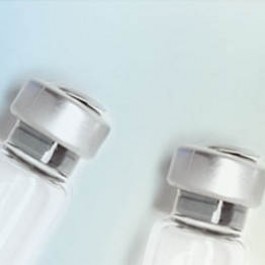pan Cytokeratin Mouse Monoclonal Antibody [Clone ID: 80]
CAT#: AM32292SU-N
pan Cytokeratin mouse monoclonal antibody, clone 80, Supernatant
Need it in bulk or conjugated?
Get a free quote
CNY 3627.00
货期*
5周
规格
Product images

Specifications
| Product Data | |
| Clone Name | 80 |
| Applications | IF, IHC, WB |
| Recommend Dilution | Western blotting: Use a preparation of Human callus or keratinocyte as Positive Control. Immunofluorescence. Immunohistochemistry on Frozen Sections: ~1/50. Immunohistochemistry on Paraffin Embedded Tissue: ~1/10 (Dilution buffer PBS with 1% BSA). To obtain a positive result in paraffin embedded tissue a TUF pretreatment is recommended. See Protocols for more details. |
| Reactivity | Human, Mouse, Rat |
| Host | Mouse |
| Clonality | Monoclonal |
| Immunogen | Callus cytokeratins isolated from fresh Human skin tissue. |
| Specificity | This antibody clone 80 recognizes most Human keratins in Immunoblots. The antibody stains in Immunohistochemistry and Immunofluorescence tests all types of keratin containing (that is epithelial) cells in Frozen Sections of various tissues, with the exception of myoepithelial cells. It also stains Mouse and Rat keratin. No cross-reactivity in Neurofilament, Vimentin, GFAP, and Desmin. |
| Isotype | IgG1 |
| Formulation | State: Supernatant State: Liquid Tissue Culture Supernatant Preservative: 10mM Sodium Azide, 1% FCS |
| Concentration | lot specific |
| Conjugation | Unconjugated |
| Storage Condition | Store the antibody undiluted at 2-8°C. |
| Background | Cytokeratin is a family of basic and acidic proteins, present in dermal tissues. Each cytokeratin is formed by heterotetramers of different types of keratin, that span from 1 to 18. In keratinized epidermis, 50 kD keratin is present in the basal layer, while 56.5 kD keratin is present in suprabasal layers, where as 58 kD keratin is present in the basal and suprabasal layers, while 65 to 67 kD keratin is present in the cells above the basal layers. |
| Synonyms | pan Keratin, Cytokeratin pan-reactive |
| Note | Protocol: Indirect Immunoperoxidase Staining On Frozen Sections (DAB): 1. 4 to 6 micron thick sections should be used. 2. Sections are thawed, 1-2 hours at room temperature. 3. Tissue is fixed in acetone, 10 minutes. 4. Wash with PBS, 2 x 3 minutes. 5. Incubate with monoclonal antibody (diluted in PBS), 1-2 hours at room temperature. 6. Wash with PBS, 3 x 3 minutes. 7. Incubate with peroxidase labeled second antibody, 30-60 minutes at room temperature. 8. Wash with PBS, 3 x 3 minutes. 9. Stain with diaminobenzidin (DAB) solution 10 minutes at room temperature. 10. Wash with running tap water, 3 minutes. 11. Counterstain with Mayer's hematoxylin, 2 minutes. 12. Wash with running tap water, 5 minutes. 13. Dehydrate with increasing solution of ethanol; 50%, 70%, 96%, absolute, 3 minutes each. 14. Clear with Xylol, 3 x 3 minutes. 15. Mount with mounting medium (e.g. malinol). Indirect Immunoperoxidase Staining on Frozen sections (AEC): 1. Frozen sections should have been fixed in acetone for 10 min. 2.Incubation in antisera 40-60 min. 3. Incubation in conjugate (e.g. peroxidase conjugated anti mouse IgG), 30 min. 4. Wash in PBS 2 x 5 min. 5. Incubation in AEC, 0.0.1% H2O2, 10 min. Preparation substrate: a) 5 mg AEC (3-amino-9-ethylcarbozole) is solubilized in 0.5 ml DMF (dimethylformamide). A glass (or acetone resistant plastic) tube or pipet should be used! b) add 9.5 ml. 0.05M NaAc buffer, pH 4.9. c) add 5 ul 30% H2O2. 6. Wash in demi water, 2 x 5 min. 7. Slightly counterstain in hematoxylin e.g. 10 sec. 8. Wash in tap water until sections are blue. 9. Mount in aquamont and examine by microscopy. |
| Reference Data | |
Documents
| Product Manuals |
| FAQs |
| SDS |
Resources
| 抗体相关资料 |
Customer
Reviews
Loading...


